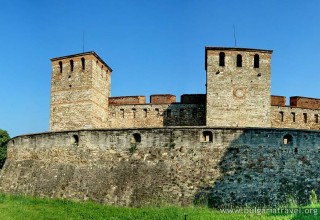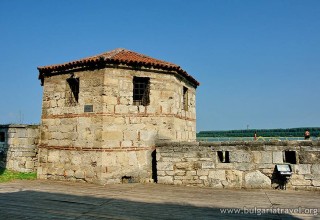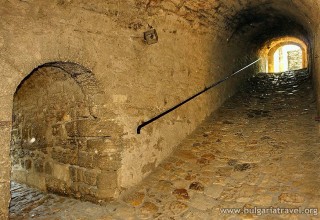The Babini Vidini Kuli fortress, also known as Baba Vida Fortress is situated on an area of 9.5 decares on the bank of the river Danube, in the northern part of Vidin.
The fortress was raised upon the remains of the ancient town of Bononia. The construction of the medieval castle began during the second half of the 10th century, but during the Second Bulgarian Empire (the end of the 12th – 14th century) the basic construction was performed. The last Bulgarian king before the falling of Bulgaria under the Ottoman dominion, Ivan Sratsimir (1324– 1397) had lived in the fortress.
According to a legend, Vida had been the eldest daughter of a wealthy Bulgarian boyar. Due to the unsuccessful marriages of her sisters – Kula and Gamza, Vida rejected all of the proposals for marriage, built the castle and remained in it for the rest of her life.
During the Ottoman rule, the warehouse premises for food and ammunition and guard-rooms were separated in the fortress. And after the Liberation (1878) the access to it was forbidden because the site was used by the army.
The first excavations in the fortress from 1956 to 1962 uncovered remains of the Roman, Byzantine, early Bulgarian, late Bulgarian and Ottoman age.
Baba Vida was opened to visitors in 1958 and a museum was arranged in the fortress.
In 1964 the medieval castle was declared a monument of culture, having national significance.
The fortress is surrounded by a moat, which was sometimes filled with water from the river Danube, and the bridge was mobile. Baba Vida had nine corner and intermediate towers with the walls and the towers ending with loop-holes.
The grounds of a chapel from the 13th-14th century were found during excavations in the fortress.
Availability for visits: Paid, all year round, available guide, souvenirs, informational materials. The curators conduct lectures only in Bulgarian language.
Transport accessibility: The museum is situated at the riverbank of the Danube, in the By-river park. There are designative signs leading to the fortress. Such ones are placed even before the entrance of Vidin.
Tourist infrastructure: hotels, restaurants, Tourist Information and Training Centre and Office of the Danube Bureau









